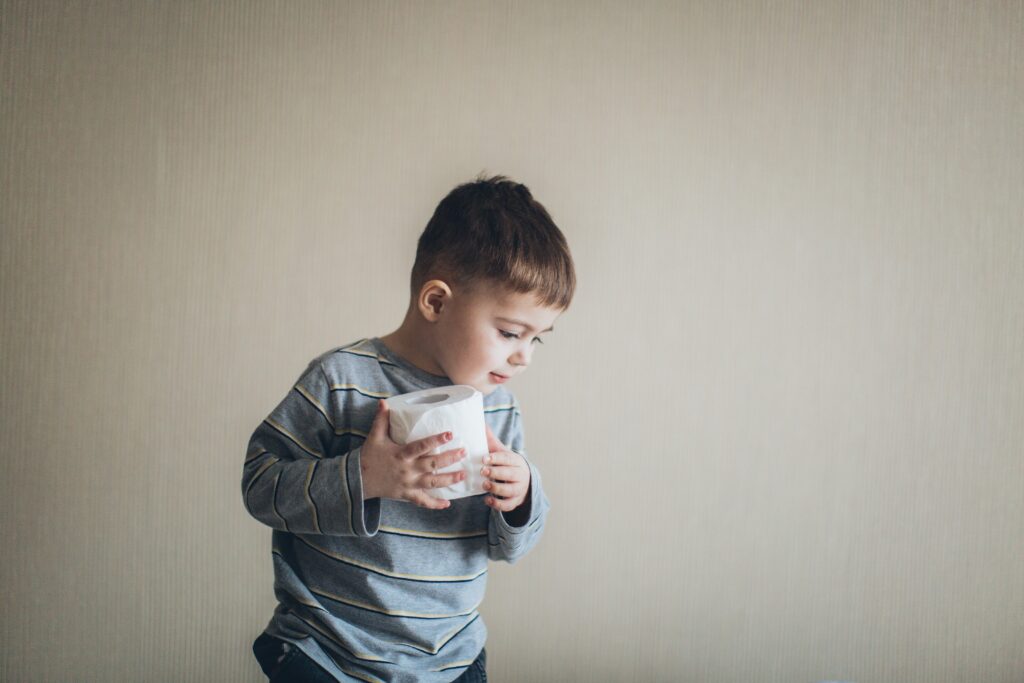Nighttime Potty Training: 6 Tips For Success
June 27, 2023

Potty training is a hugely exciting time for parents. Finally, time to get rid of diapers! While you’re excited, you may also be nervous about the potty training process. You may wonder how to start, how to do it, and how long it might take. For most kiddos, daytime bladder control happens first and then, staying dry overnight is the next and final step.
The skills needed to control the bladder during the day usually develop by age 4. The ability to stay dry overnight usually happens months to years after daytime control. Nighttime bladder control is not expected until age 5-7. As a sleep consultant and Nurse Practitioner, I often get questions around how to handle nighttime potty training.
For both you and your little one, potty training marks an important milestone. However, it can be stressful for parents and children. Today I want to share 6 tips to help you and your little one be successful with nighttime potty training.
6 Tips For Nighttime Potty Training Success
1. Develop a Consistent Bedtime Routine
Establishing a consistent bedtime routine is crucial for nighttime potty training. Encourage your little one to use the bathroom before bed. I like to include using the bathroom before or after brushing teeth in the bedtime routine. Make it a regular part of her routine so she can associate it with preparing for sleep. This step helps empty her bladder before bedtime, reducing the likelihood of nighttime accidents.
2. Limit Fluid Intake Before Bedtime
To minimize the chances of nighttime accidents, limit your child’s fluid intake in the hours leading up to bedtime. Encourage her to drink plenty of fluids throughout the day, but gradually reduce the amount closer to bedtime. This helps minimize the volume of urine produced during sleep thus helping reduce the likelihood of nighttime accidents.
3. Encourage Bathroom Trips During the Night
If your child wakes up during the night, encourage him to use the bathroom. Place a nightlight in the hallway or bathroom to make it easier for him to navigate in the dark. Initially, you may need to guide or remind him to use the toilet. Over time, he will develop the habit of waking up and using the bathroom independently.
4. Protect the Bed with Waterproof Sheets
Accidents may happen during nighttime potty training and are an expected part of the process. Protect your child’s bed by using waterproof mattress covers. I recommend setting up your little one’s bed as follows: a waterproof protector, then a sheet, a second waterproof protector, and finally, another set of sheets. This helps prevent any damage to the mattress and makes clean-up easier. In the middle of the night if there’s an accident, you can just take off the top set of sheets and the waterproof cover to make for a stress free sheet change.
5. Offer Positive Reinforcement
Nighttime potty training can be a challenging process. Offer your child encouragement and praise for his efforts, progress, and dry nights. Use positive reinforcement strategies, such as stickers, rewards, or a chart to track his successes. Celebrate his achievements, no matter how small, to motivate and reinforce his commitment to staying dry through the night.
6. Be Patient and Understanding
Nighttime potty training takes time and patience. Accidents may occur, and setbacks are common. Be understanding and avoid punishment or criticism. Provide reassurance and support to your child, emphasizing that accidents are a normal part of the learning process. Maintaining a positive and supportive attitude will help create a safe and encouraging environment for your child during nighttime potty training.
Summary: Tips For Nighttime Potty Training Success
Finally, once your little one has stayed dry for several nights in a row, you can keep them out of a pull-up and revel in a new era without diapers! Nighttime potty training is a significant milestone for children as they become independent in staying dry through the night. Remember, each child progresses at their own pace. Celebrate their achievements and provide support throughout the process!
If you’re experiencing any sleep challenges with your little one or need support, I invite you to reach out to me or check out my services. Having a sleep expert and cheerleader in your corner can make all the difference in both you and your child getting a restful night’s sleep.